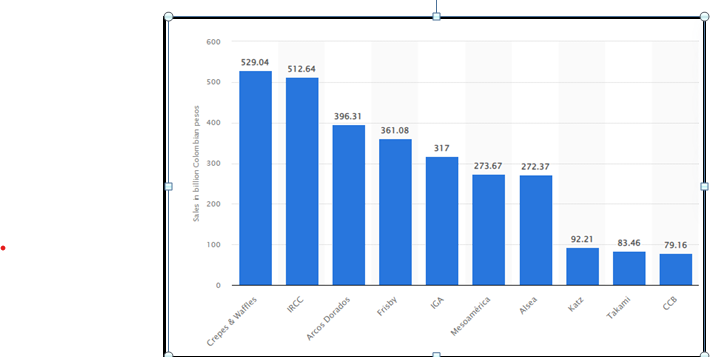7069SOH – Managing and Planning Resources in Healthcare Organisations Assignment Sample 2023
INTRODUCTION
- Health financing is one of the core functions related to effective health coverage.
- The study aims to give an account of the national insurance model and public Medicare programme model.
The Healthcare funding model provides economic incentives to enhance the operations of health systems. It is a key determinant of health system performance. The Core function of healthcare funding models is to raise revenues of healthcare systems so that patient care services can be improved. In this regard, the study aims to analyse the impact of two major models of healthcare funding such as the national insurance model and public Medicare programme model on health system performance.
HEALTHCARE FUNDING MODELS
The National Health Insurance Program model is a tax-financed National Health Protection Scheme programme that is funded by Indian government (Ranjanet al. 2018, p.1-12).
In India, for employees and employers Employee’s State Insurance is available in which both employees and employers contribute.
In this scheme, employees contribute 0.75% of their income and employers contribute 3.25% and to become eligible for this scheme employees must have earning of 21000 INR per month (Ahuja, 2021).

Ayushman Bharat-Pradhan Mantri Jan Arogya Yojana, or PM-JAY is funded by tax payers to get healthcare facilities both by inpatient and outpatients for private providers. Medical council of India, pharmacy council of India, Dental council of India, and Indian Nursing Council are the four health care councils that control the entire healthcare system all over India.
Despite being driven by the public providers the payments for the Ayushman Bharat-Pradhan Mantri Jan Arogya Yojana come from government-run insurance programmes which every Indian citizen pays into. It does not contain any motive to deny claims and make profits. On the other hand, the Public Medicare programme model is usually funded through mandatory payroll taxes and general revenues of beneficiaries so that healthcare services can be covered under the model.
IMPACT OF HEALTHCARE FUNDING ON SERVICE DELIVERY
- Aam Admi Bima Yojana (AABY) is a social health security system for the Indian population that is administered by the Life Insurance Corporation of India (LIC).
- It ensures quality healthcare services by limiting healthcare costs.
- The Medicare programme ensures the provision of necessary healthcare services on time (Bowles, Czekster& Webber, 2018, p. 146-162).
- The Medicare programme also offers patient care services in hospital outpatient settings.
- Ayushman Bharat-Pradhan Mantri Jan Arogya Yojana is funded by both the state government and central government in which the state government contributes 40% and the central government provides 60% (Pmjay.gov.in, 2021).
It aims to cover all of the health expenditures of the enrolled people under the scheme so that quality care can be provided to the patients. This model protects the families of the beneficiaries so that financial hardship issues can be resolved. Additionally, it also ensures high-standard delivery care along with equitable patronage of all healthcare systems.
On the other hand, The Medicare programme offers advanced healthcare planning for the patients including the services of hospital outpatient setting and critical access hospital settings by the patients. Moreover, it also offers advantages such as skilled nurses and reduced cost in self-administered prescription drugs in order to reduce the burden of healthcare costs.
IMPACT OF HEALTHCARE FUNDING ON SERVICE DELIVERY CONTD
- The Ayushman Bharat-Pradhan Mantri Jan Arogya Yojana offers family floater plans along with individual plans (Javanparast et al.2019, p. 68-74).
- The Medicare programme aims to strengthen and modernizes the national health care systems (Reddy, 2017, p. 208-211).
Besides individual plans, Ayushman Bharat-Pradhan Mantri Jan Arogya Yojana is also associated with offering services for families, senior citizens, and group plans along with comprehensive healthcare policies. Moreover, it also provides free health check-up facilities upon understanding the needs of the patients. On the other hand, the Medicare programme also includes children’s care facilities so that healthcare services can be improved at a reduced cost.
Socialized medicine model is used by this type of health care funding model. The Medicare programme allows patients to choose health plans. This type of healthcare funding programme is funded through beneficiary premiums, payroll taxes, co-pays as well as deductible pays, and US treasury revenues. This programme ensures high-quality care facilities to the patients who are enrolled under the scheme along with drug plans and skilled nursing facilities in hospice environments.
CONTRAST BETWEEN TWO MODELS
- The Medicare programme uses a fee-for-service model whereas the Ayushman Bharat-Pradhan Mantri Jan Arogya Yojana programme runs on a capitation system (Liberati, Peerally & Dixon-Woods, 2018, p. 39-43).
- Medicare does not contain out-of-hours care requirements but the Ayushman Bharat Pradhan Mantri Jan Arogya Yojana does include this facility.
The Australian and Indian healthcare systems are chiefly based on publicly funded healthcare systems. 57% of the Australian population has opted for Medicare and 65% of the Indian population are covered under the PM-JAY scheme. Both Australia and India are based on the ideology of publicly funded healthcare systems for the population.

The taxpayers of Australia pay their income at a rate of 1.5% to Medicare so that it can add up to their account of health expenditures (Paul, 2019). On the other hand, 3.6% of the GDP is funded through healthcare services and these types of private and public healthcare services.
Moreover, in the case of Medicare, it uses a fee-for-service model where the patients are required to remunerate GP. On the other hand, the PM-JAY provides fixed services to the patients at free-of-cost facilities. However, it does not allow choosing of healthcare services as per requirements which are provided by Medicare.
CONTRAST BETWEEN TWO MODELS CONTD
- NHS is reported to fail wait-time requirements and Australia possesses greater accessibility even in remote areas (Moro Visconti &Morea, 2020, p. 2318).
Australia possesses the potential to increase the life expectancy of patients to less than 1 year. On the contrary, the PM-JAY possesses the potential to increase 3-4 years of life expectancy. In Medicare, GP payment is dependent on the type and service provided to the patients. Conversely, the PM-JAY does not have the advantage of a fee-for-service charge.
Both the PM-JAY and Medicare possess the potential to increase the life expectancy of the patients upon providing high-quality care services. However, Medicare does not possess the facility of out-of-hours availability of healthcare providers whereas the PM-JAY provides this facility to their patients so that necessary care can be provided anytime. Besides these, the wait time is one of the most critical issues in the case of the PM-JAY whereas Medicare reduces the risk of wait time extensively.
APPLICATION OF RESOURCE PLANNING AND PERSPECTIVES OF MANAGEMENT
- Generating income, tax-exempt status, and internal spending are the chief aspects of financial management.
- The budget of healthcare chiefly focuses on insurance billing, labour costs, and equipment costs (Almutairi & Al Shamsi, 2018, p.111-121).
- Cost-benefit analysis provides a framework of monetary valuation.
- The analytical and technical skills of healthcare leaders largely impact healthcare financing.
Healthcare finance management is one of the most important aspects as it is chiefly associated with improving patient care, minimising the risk of error activities, and strategizing for appropriate investments. For this reason, the budget set of healthcare systems requires focusing on insurance billing, labour costs, costs of educating the workforce regarding appropriate equipment handling, liability costs, and expenses related to supply.

In this regard, the analytic skill of healthcare leaders is required to understand the healthcare regulatory facts including analysing the importance of incorporating the right care facilities for the patients. Additionally, technical skill is also required to determine the budget and cost-benefit analysis upon comparing the investment costs and acquired benefits from the investments.
CONCLUSION
- Providing accessibility of healthcare facilities to the patients is prioritized by both India and Australia.
- Healthcare financing is based on the ideology of accessible healthcare systems.
- Both Medicare and PM-JAY programmes integrate the potential to enhance healthcare efficiencies.
- Healthcare managers are associated with planning for healthcare financing so that the quality of care can be
Analysing the aspect of PM-JAY and Medicare it can be concluded that provision of right care facilities to the patients is the foremost objective for both PM-JAY and public Medicare healthcare finance model.
Additionally, these funding models chiefly focus on reducing the burden of healthcare expenditures so that necessary care facilities can be provided to the patients whenever they need them. In order to provide high-quality care facilities, drug facilities, and proper treatment facilities whether in hospice environment or hospital environment funding plays a significant role in delivering appropriate services to the patients.
REFERENCES
Journals
Ahuja, R., (2021). Minoritarian Labour Welfare in India: The Case of the Employees’ State Insurance Act of 1948. In One Hundred Years of Social Protection (pp. 157-188). Palgrave Macmillan, Cham.https://link.springer.com/chapter/10.1007/978-3-030-54959-6_5
Almutairi, A. G., & Al Shamsi, H. (2018). Healthcare system accessibility in the face of increasing privatisation in Saudi Arabia: lessons from Australia. Global J Health Sci, 10(7), 111-121.https://www.researchgate.net/profile/Hilal-Alshamsi/publication/325690699_Healthcare_System_Accessibility_in_the_Face_of_Increasing_Privatisation_in_Saudi_Arabia_Lessons_From_Australia/links/5d183ca4299bf1547c8935ef/Healthcare-System-Accessibility-in-the-Face-of-Increasing-Privatisation-in-Saudi-Arabia-Lessons-From-Australia.pdf
Javanparast, S., Baum, F., Freeman, T., Ziersch, A., Henderson, J., &Mackean, T. (2019). Collaborative population health planning between Australian primary health care organisations and local government: lost opportunity. Australian and New Zealand journal of public health, 43(1), 68-74. https://onlinelibrary.wiley.com/doi/pdfdirect/10.1111/1753-6405.12834
Liberati, E. G., Peerally, M. F., & Dixon-Woods, M. (2018). Learning from high risk industries may not be straightforward: a qualitative study of the hierarchy of risk controls approach in healthcare. International Journal for Quality in Health Care, 30(1), 39-43. https://academic.oup.com/intqhc/article/30/1/39/4779889
McDonagh, J. E., Farre, A., Gleeson, H., Rapley, T., Dovey-Pearce, G., Reape, D., …& Parr, J. R. (2018). Making healthcare work for young people.Archives of disease in childhood, 103(6), 623-623. https://adc.bmj.com/content/archdischild/103/6/623.full.pdf
Moro Visconti, R., &Morea, D. (2020). Healthcare digitalization and pay-for-performance incentives in smart hospital project financing. International journal of environmental research and public health, 17(7), 2318. https://www.mdpi.com/1660-4601/17/7/2318/pdf
Paul, V. (2019). Ayushman Bharat Pradhan Mantri Jan Arogya Yojana (AB PMJAY): Hope for Millions and Exciting New Prospects for Neuro-Healthcare. Neurology India, 67(5), 1186.https://www.neurologyindia.com/article.asp?issn=0028-3886;year=2019;volume=67;issue=5;spage=1186;epage=1187;aulast=Paul
Pmjay.gov.in, 2021. Retrieved on: 24th October, 2021 from: https://pmjay.gov.in/about/pmjay
Ranjan, A., Dixit, P., Mukhopadhyay, I. & Thiagarajan, S., 2018. Effectiveness of government strategies for financial protection against costs of hospitalization Care in India. BMC public health, 18(1), pp.1-12.https://bmcpublichealth.biomedcentral.com/articles/10.1186/s12889-018-5431-8
Reddy, S. (2017).Exploration of funding models to support hybridisation of Australian primary health care organisations.Journal of primary health care, 9(3), 208-211. https://www.publish.csiro.au/HC/pdf/HC17014

